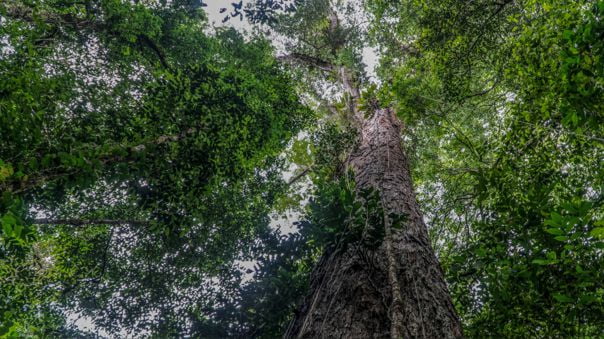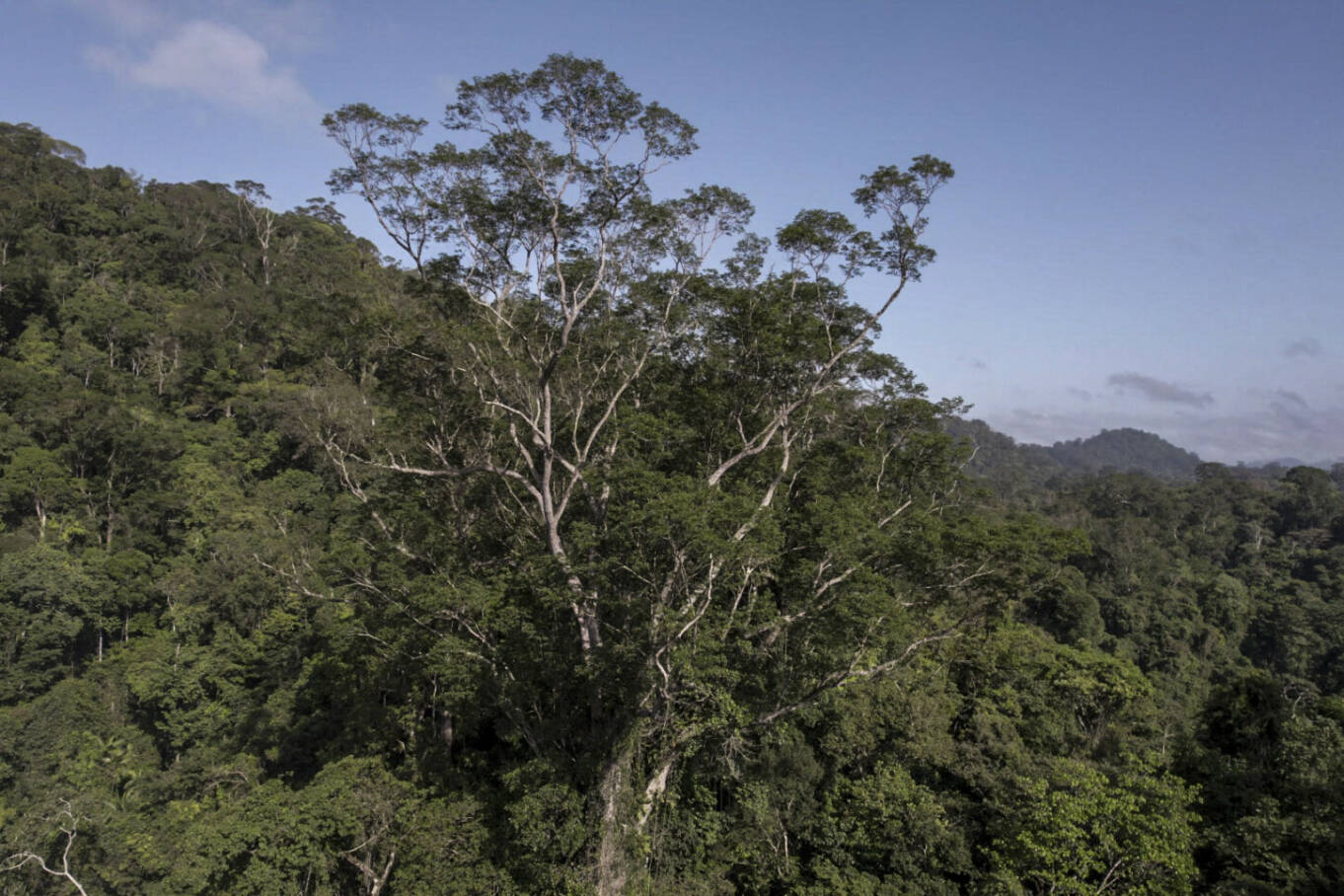Es el más grande jamás identificado en el Amazonas, dicen los científicos. Un equipo de académicos, ambientalistas y guías locales montaron una expedición para intentar llegar a él”

Un equipo de científicos alcanzó el árbol más alto jamás encontrado en la selva amazónica, un espécimen imponente del tamaño de un edificio de 25 pisos. Se trata de un angelim vermelho, que mide 88,5 metros de altura y 9,9 metros de diámetro. Se ubica en la Reserva Natural del Río Iratapuru, en el norte de Brasil. El árbol gigante, cuya copa sobresale por encima del dosel en la Reserva Natural del Río Iratapuru.
Los investigadores lo vieron por primera en imágenes de satélite en 2019, como parte de un proyecto de mapeo en 3D. El enorme angelim vermelho permaneció escurridizo hasta la expedición del 12 al 25 de septiembre, cuando los investigadores viajaron 250 kilómetros en bote río arriba con traicioneros rápidos, más otros 20 kilómetros a pie a través de un terreno selvático montañoso para llegar a él.

Después de acampar bajo el enorme árbol, el grupo recolectó hojas, tierra y otras muestras, que ahora serán analizadas para estudiar cuestiones como la edad del árbol (al menos entre 400 y 600 años, estima Silva) y saber por qué la región tiene tantos árboles gigantes y cuánto carbono almacenan. La madera de angelim vermelho es muy apreciada por los madereros, y la reserva de Iratapuru está siendo invadida por mineros de oro ilegales, famosos por provocar la destrucción ecológica. En los últimos tres años, la deforestación anual promedio en la Amazonía brasileña aumentó un 75 % respecto a la década anterior.
Fuente: rpp.pe






